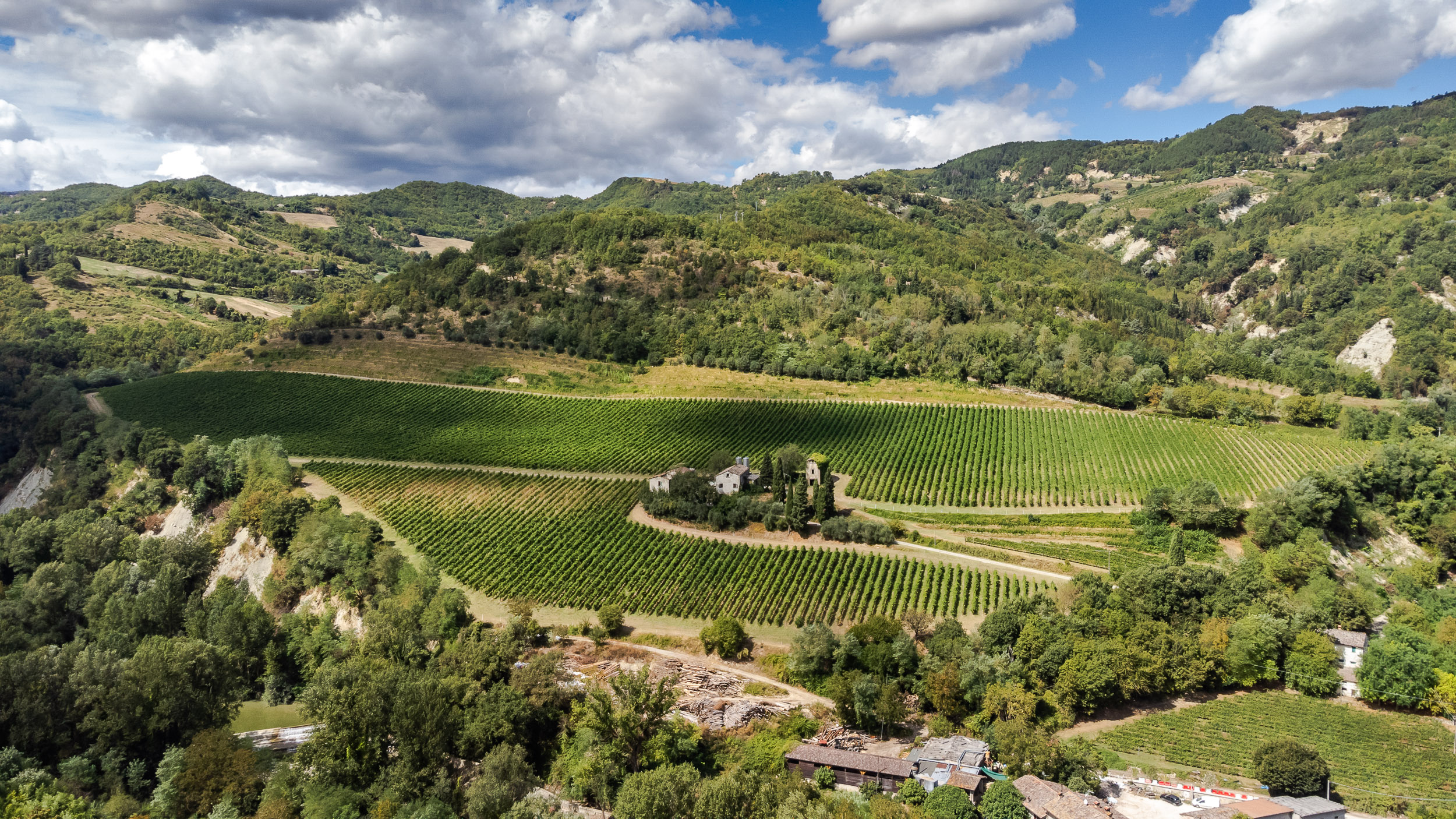After nearly 100 years in the Bidente Valley, Poderi dal Nespoli continues its pursuit of wines that fully express the winemaking potential of Emilia-Romagna.

Emilia-Romagna may not be Italy’s most famous winemaking region, but it has all the makings of a great one. Indeed, you can easily tick off the advantages that often define great Italian wine.
It has geographic diversity, being situated between the Adriatic Sea and the Apennines. It grows a large range of varieties, from widespread Italian classics to local specialities to international stalwarts. It also has wineries that have been growing in expertise over generations.
One such producer is Poderi dal Nespoli. The Ravaioli family’s roots lie in hospitality, having once run a well-known local osteria before fully dedicating themselves to the world of wine. Over four generations, the producer has grown into one of the region’s leading names.
Over more than 90 years, it has acquired vineyards so that it now holds 65 hectares of vines. These are centred around Cusercoli, a picturesque village in the Bidente Valley. The valley itself is significant: as Italy’s first bio-symbiotic district, it is an area striving to support its natural beauty through agriculture in harmony with soil and micro-organisms.
Poderi dal Nespoli, however, is not merely resting on its laurels. It has continued to refine its winemaking while never losing sight of its Romagna roots.
In 2022, it joined the Argea group, putting it in the company of some of Italy’s finest estates and wineries. On the back of that, in 2023 Poderi dal Nespoli began a collaboration with esteemed winemaker Riccardo Cotarella. Working with winemaker Scipione Giuliani, he has retooled the winery’s portfolio to communicate its history and terroir even more strongly.
A classic, reborn
Prugneto has a special place in the range. While its early days saw the winery juggle the family trattoria and its wine sales, in 1960, the decision was made to focus solely on wine. With that came a new focus on quality and diversification of the wines produced. Central to the project was a third-generation member of the founding family, Valerio Ravaioli.
Having learned from his father and uncle, he gave the project a new lease of life in the 1960s. Quality was at the forefront of his thinking. He introduced several innovations to Poderi dal Nespoli, such as reduced yields and ageing in French barriques.
He also crafted Prugneto, a single vineyard Sangiovese Superiore. The project’s prestige, using the best of the Bidente Valley and expertise built over three generations, was reflected in its motto: ‘Others make Sangiovese. We make Prugneto.’
 Prugneto is also known for its distinctive label, inspired by the paper bags at Brigitte Bardot’s boutique in St. Tropez.
Prugneto is also known for its distinctive label, inspired by the paper bags at Brigitte Bardot’s boutique in St. Tropez.
The wine has undergone subtle evolutions since then – for instance, in adjusting its sourcing to best reflect the potential of Romagna Sangiovese. The collaborative work between Cotarella and Giuliani has further refined it.
Since the style is already well-established and the winery is blessed with fine terroirs, the innovation has come in grape selection. The team is now even more meticulous in the vineyard, with hand selection into small crates ensuring that the best fruit arrives undamaged to the winery. There, it undergoes a second sorting on a vibrating table. Prugneto is thus re-emphasising its role as one of the most representative expressions of Romagna Sangiovese.
Two new additions
As part of the collaboration, Poderi dal Nespoli has also unveiled two new white wines, demonstrating the region’s potential with white grapes. Indeed, the two expressions together demonstrate true versatility in the region’s winemaking.
The first, Scanadè, makes use of a local speciality: Albana. The white grape is local to Emilia-Romagna, little-planted outside the region. It has an impressive history, however: Albana di Romagna was the first white wine in Italy elevated to DOCG status, in 1986.
At Poderi dal Nespoli, it is grown on calcareous soils and carefully selected before reaching the winery. There, the winemaking layers on complementary flavours – through batonnage, partial malolactic conversion and two months in barriques (40% new) – to go alongside its natural profile of acacia and yellow fruit.
Lóstar, meanwhile, demonstrates the potential of international grape varieties in Romagna. The Chardonnay vineyards are primarily sited on northerly exposed vineyards, lending freshness and elegance. In the winery, however, the Lóstar undergoes batonnage, partial malolactic conversion and partial ageing in barrique, blending in richer notes of toast and vanilla to the fruit-forward profile.
Related news
Viña Montes: loyalty in Japan is hard won, but long lasting
Rioja producers reinforce their commitment to concrete
How Hong Kong’s on-trade is championing lesser-known wineries and regions

